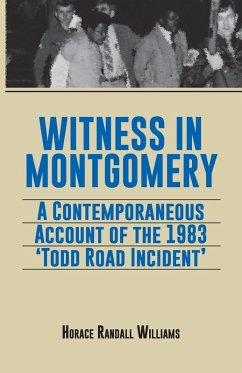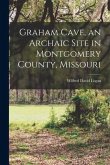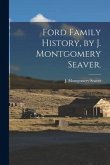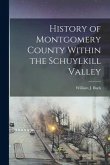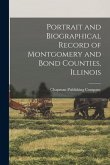On February 27, 1983, in Montgomery, Alabama, a group of black mourners, many from up north, was assembled in the deceased's home following the funeral. Before the night was over, two white plainclothes policemen had been injured, one critically, and eight mourners arrested. The police say they identified themselves, were taken hostage and then beaten and shot. The mourners say the two whites did not identify themselves as police but kicked down the door to the house and charged in with their guns drawn, at which time the blacks disarmed them and then called the police. Later, the mourners say, more police arrived and the two whites tried to escape and shots were fired. The two accounts of what came to be called "The Todd Road Incident" varied so widely that Montgomery citizens could only wait and hope that upcoming trials would reveal the truth. However, the police department's early handling of the incident was seen by blacks and many whites as a gross over-reaction and an attempt to cover up possible improper conduct by the two officers. For example, Police Chief Charles Swindall held a pre-dawn press conference to denounce the mourners as "wild animals who had prey on their ground." He used the word torture to describe the treatment of the officers, said one of them had had his throat slashed requiring seventy-five stitches, and made other highly inflammatory comments. These comments were later found to be inaccurate or exaggerated. Meanwhile, a Montgomery newspaper reporter went to Michigan, searched police records, and interviewed friends and family of the defendants. His report showed that those accused of being "animals" were well-respected, hard-working churchgoers and family members in their home communities.The situation followed a decade of other incidents in which the Montgomery police were accused of abuse and wrongful arrests and a general discontent over what was seen as a militarization by controversial Mayor Emory Folmar of the local police in terms of uniforms, tactics, and command structure. In any case, the city was plunged into a racial divisiveness not seen since the civil rights struggles of the Montgomery Bus Boycott, the Freedom Riders, and the Selma to Montgomery March of 1955-65. In response, three interracial organizations emerged to try defusing the tensions through communication and good-will. All three organizations made achievements and two of the three are still active in 2025. In the end, charges against most of the accused mourners were dismissed. One case went to trial and ended in a hung jury. There were no convictions.
Bitte wählen Sie Ihr Anliegen aus.
Rechnungen
Retourenschein anfordern
Bestellstatus
Storno

